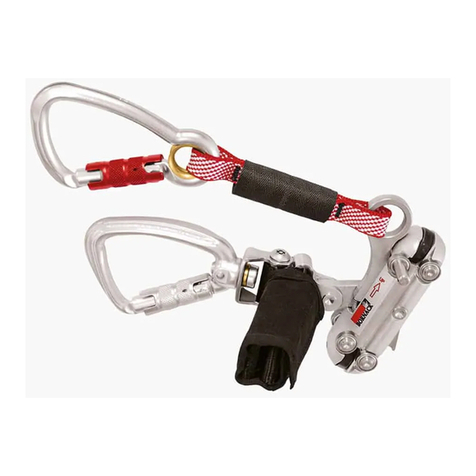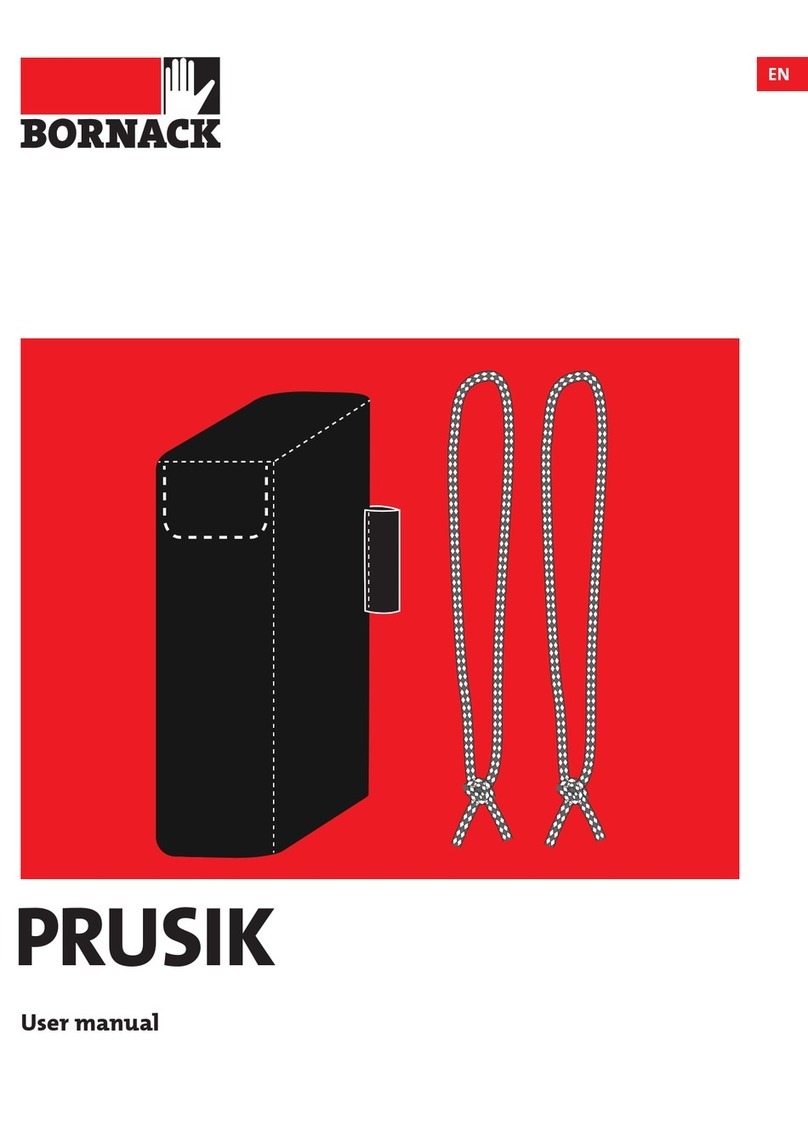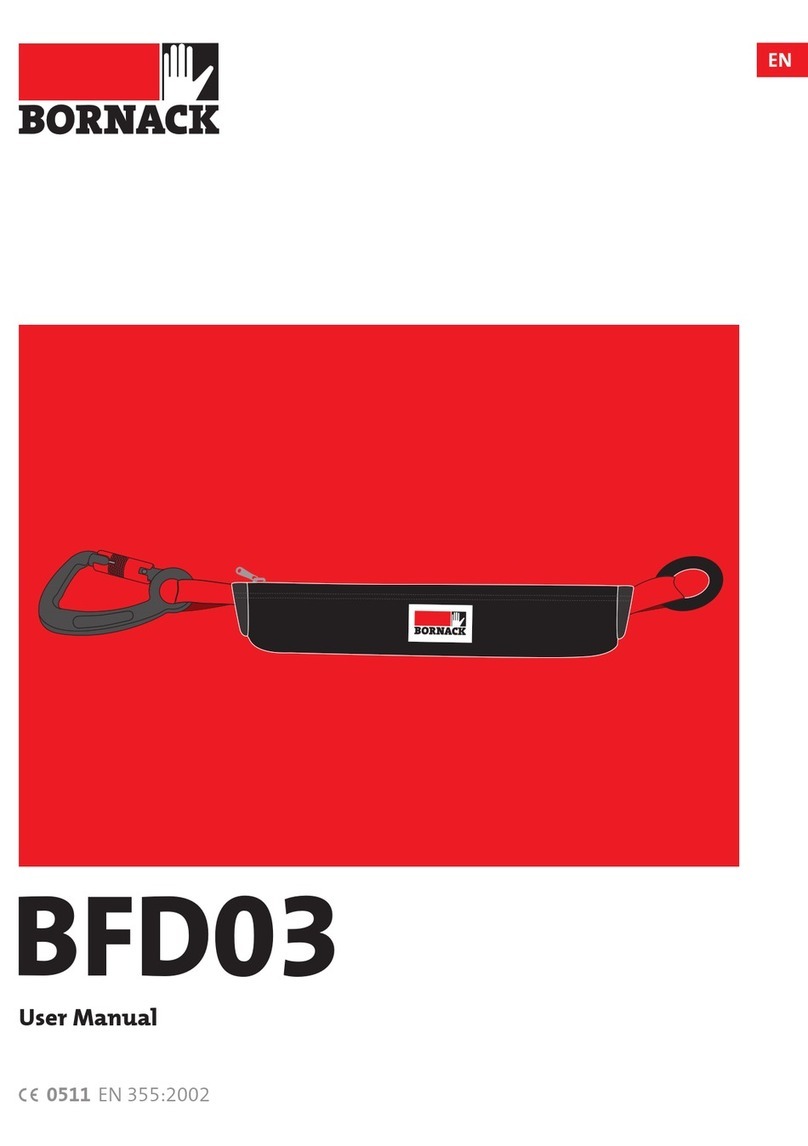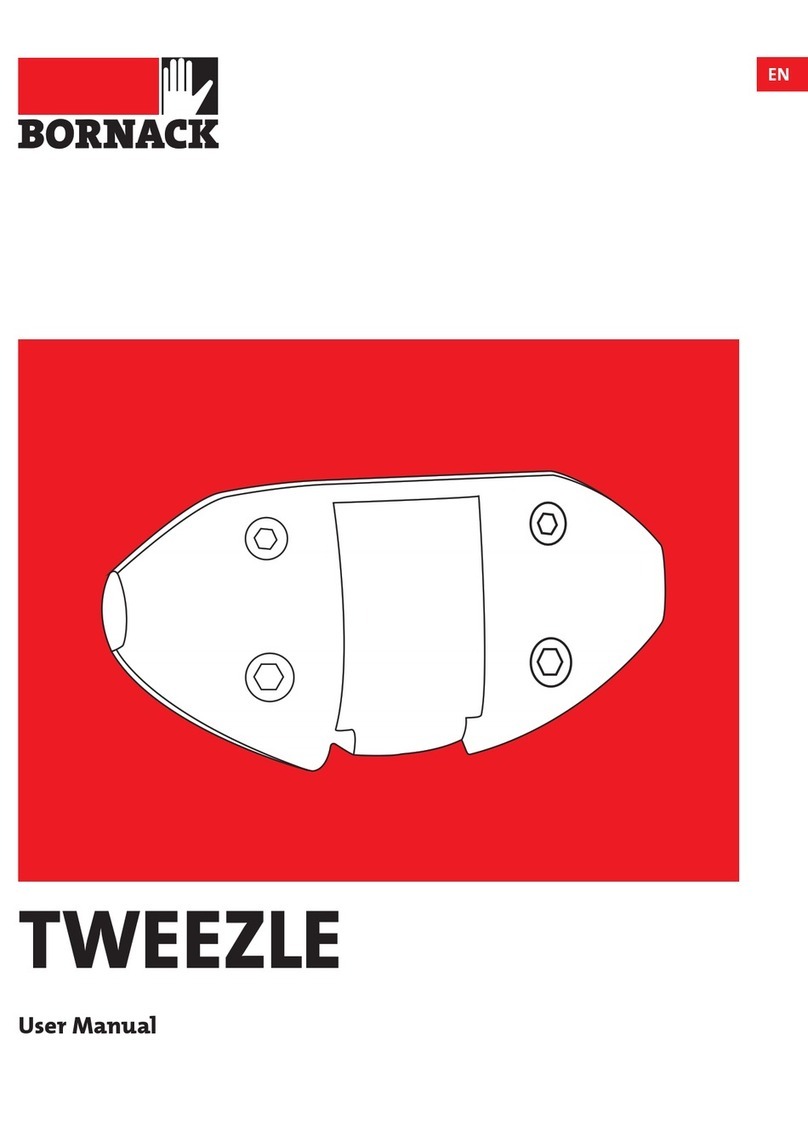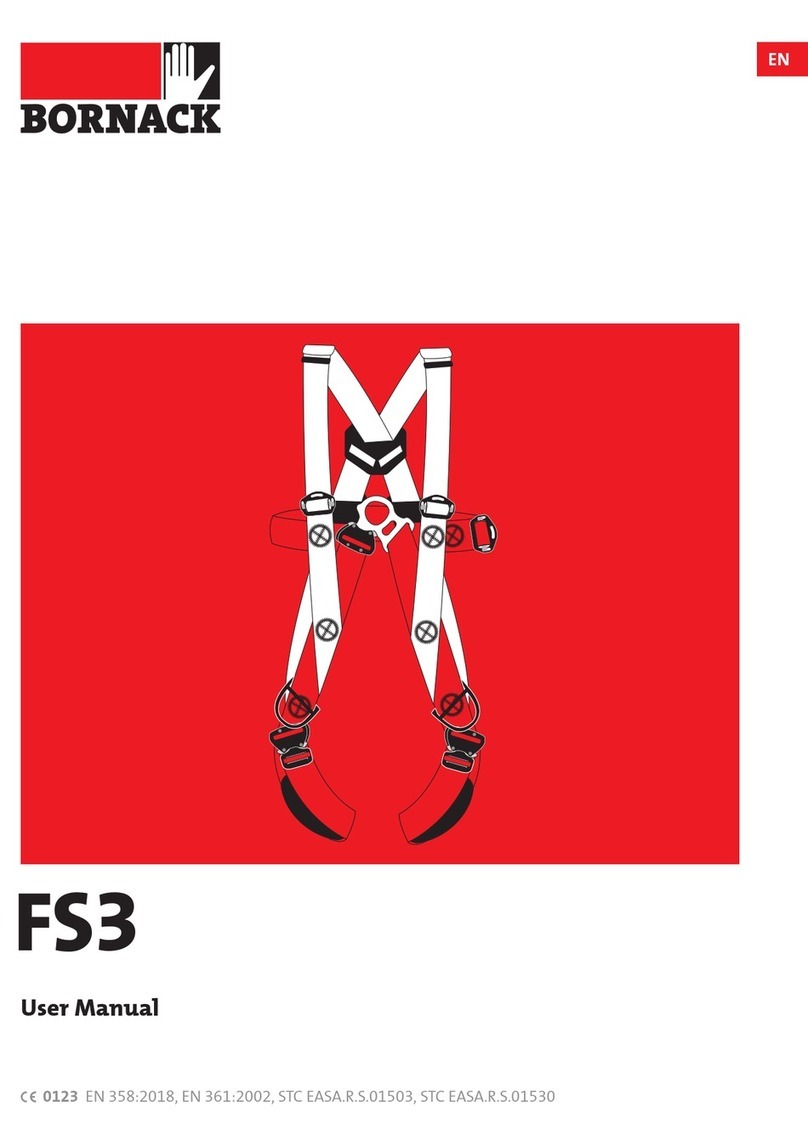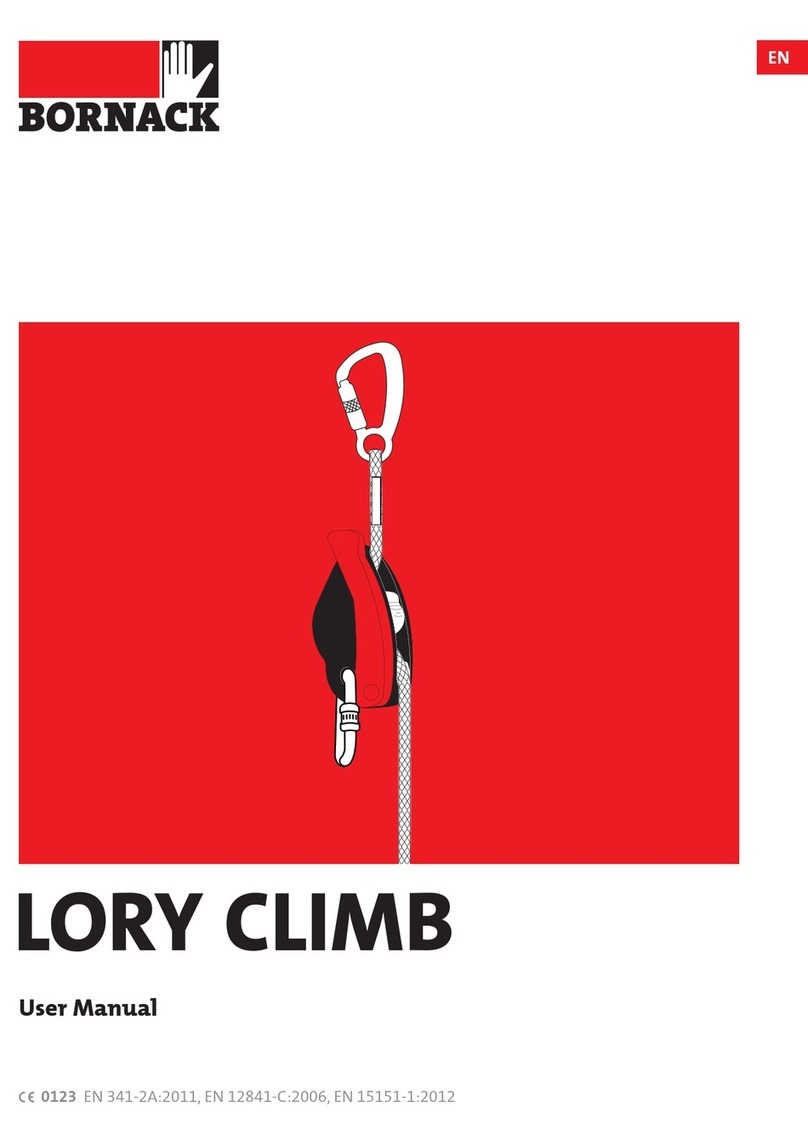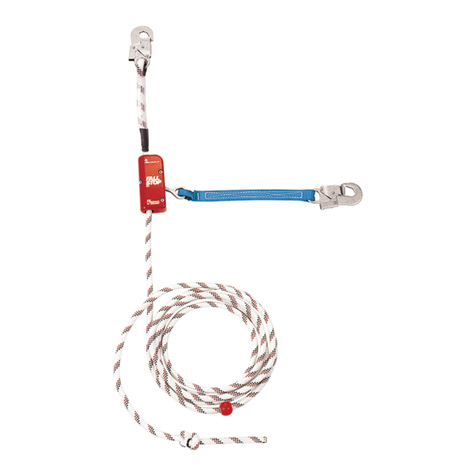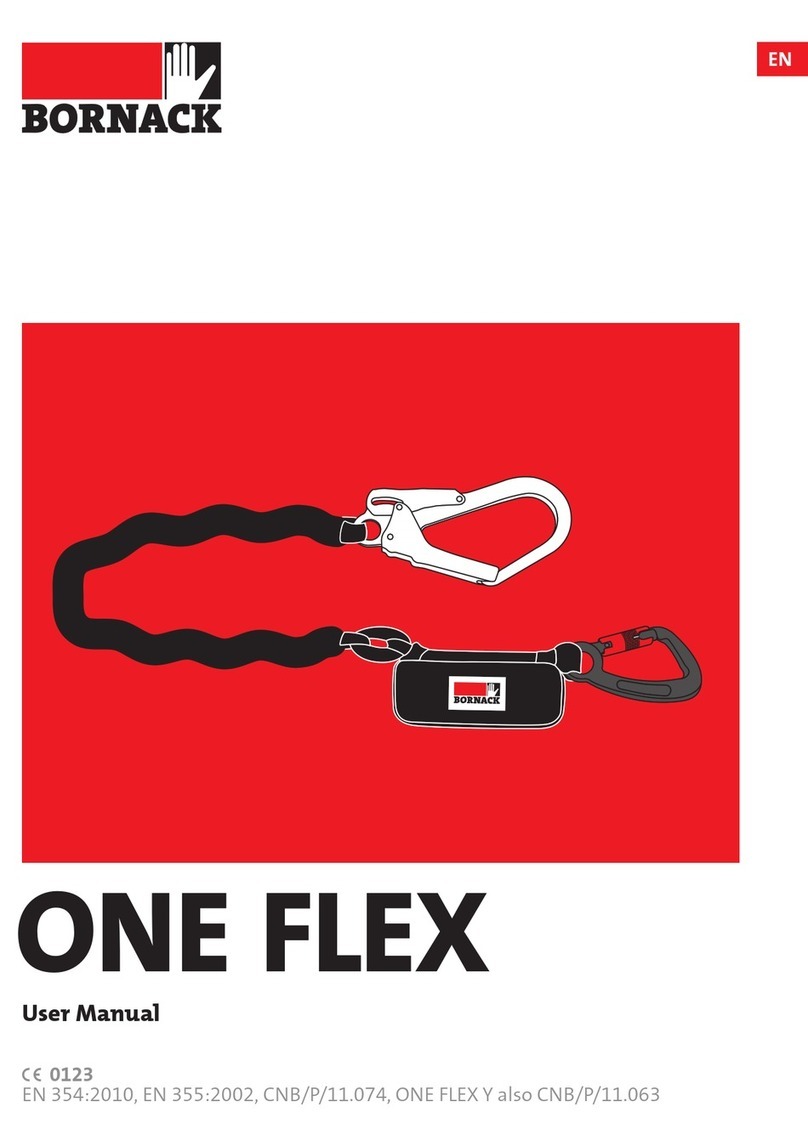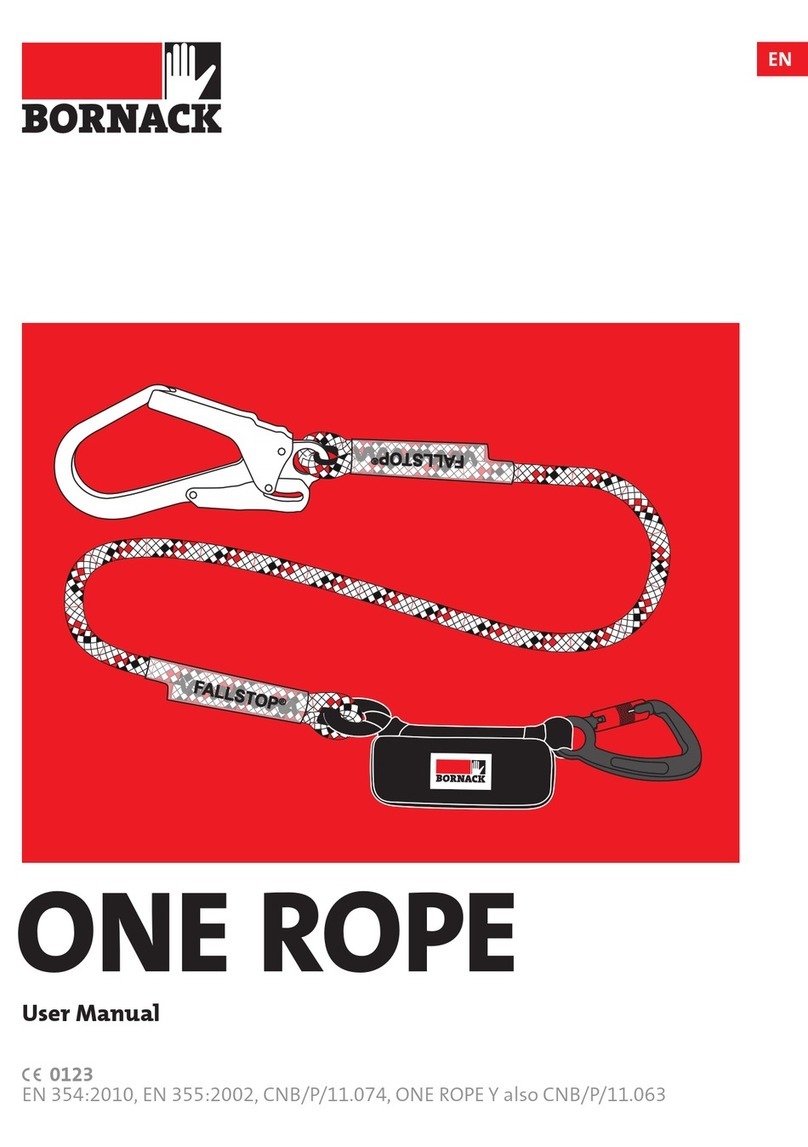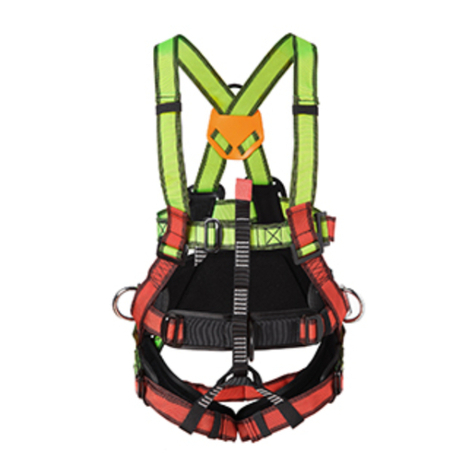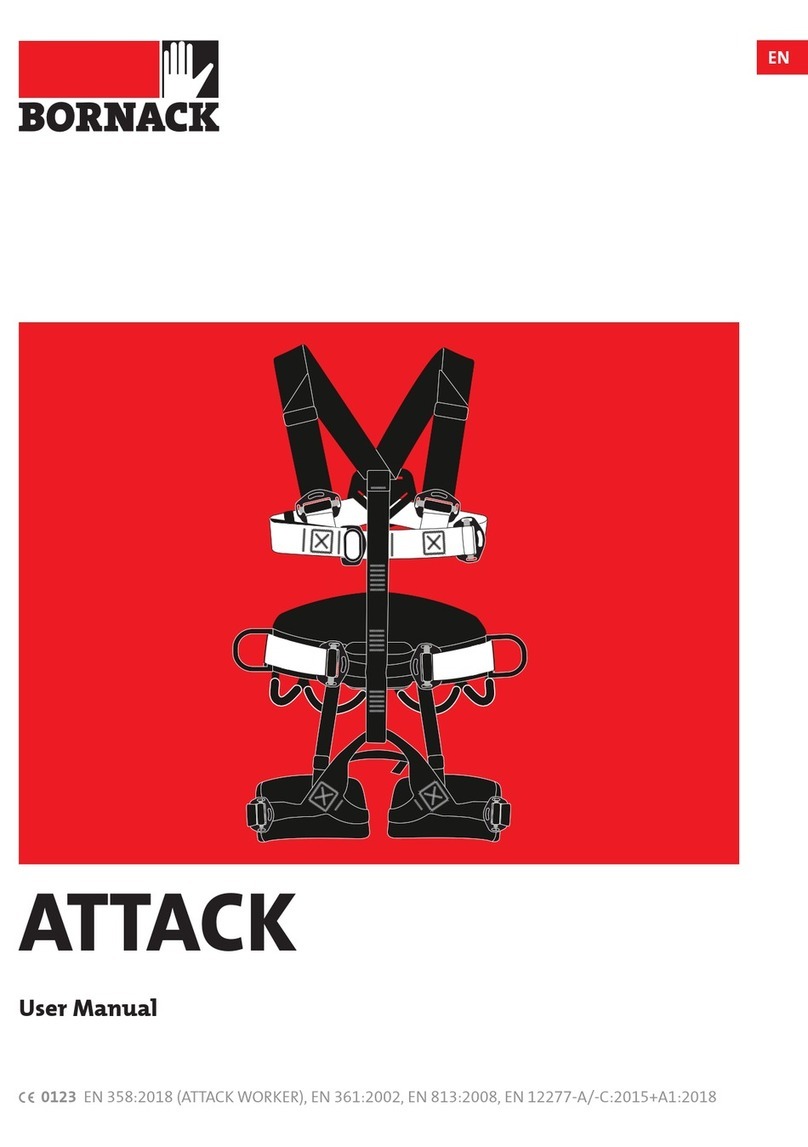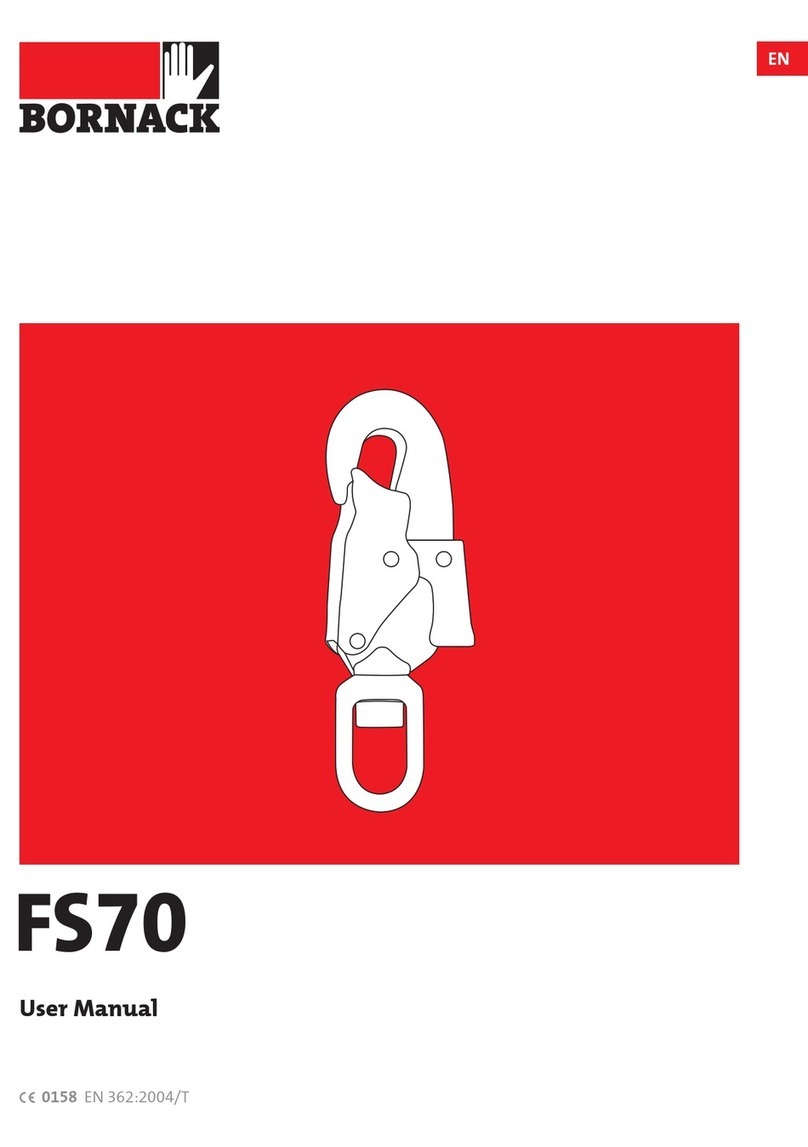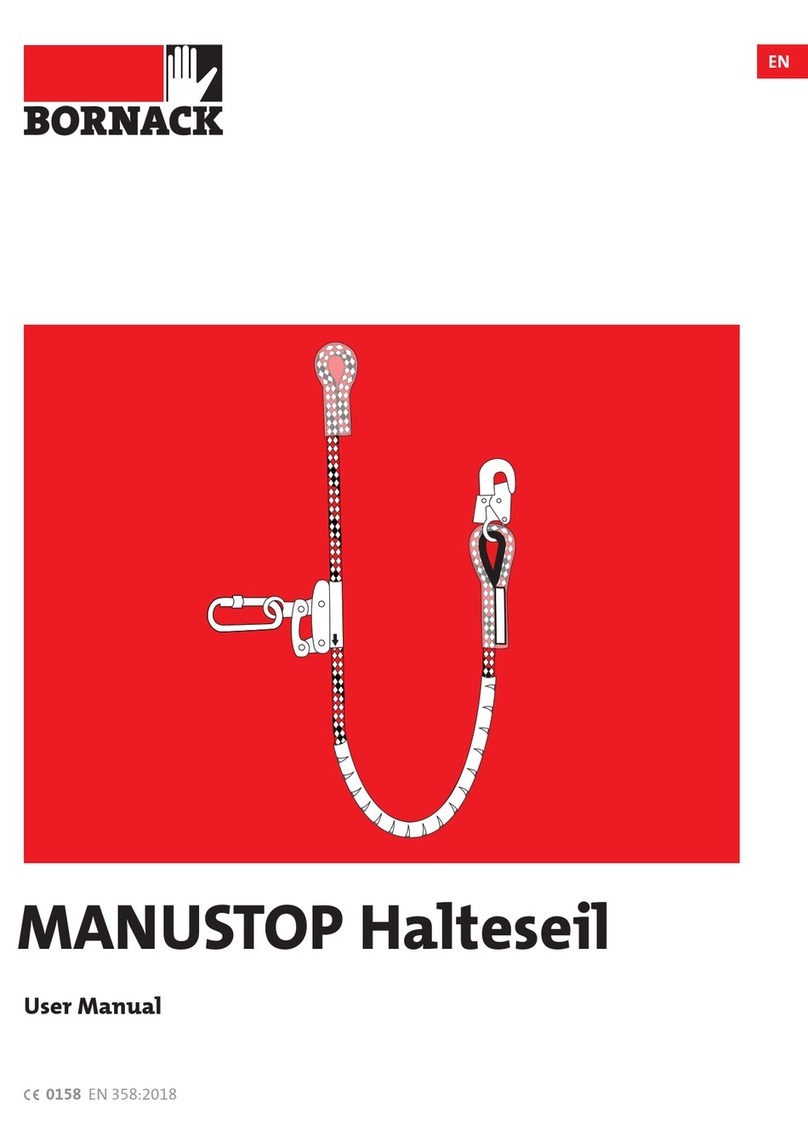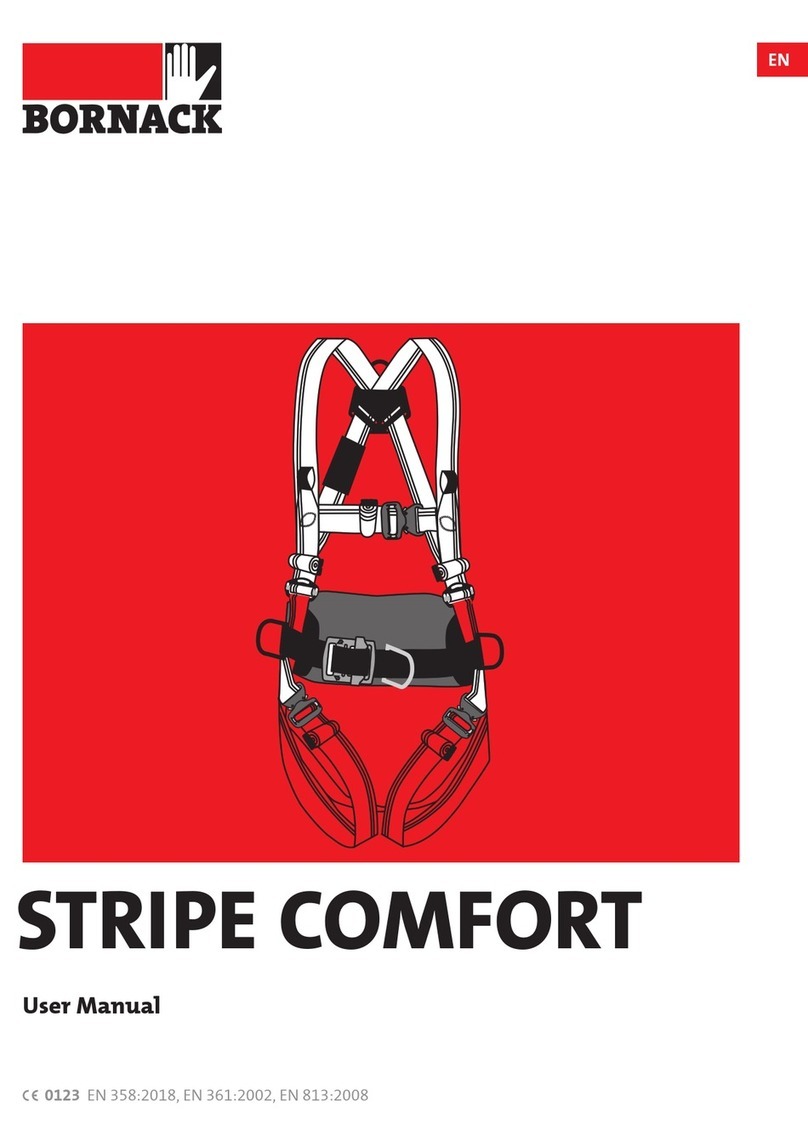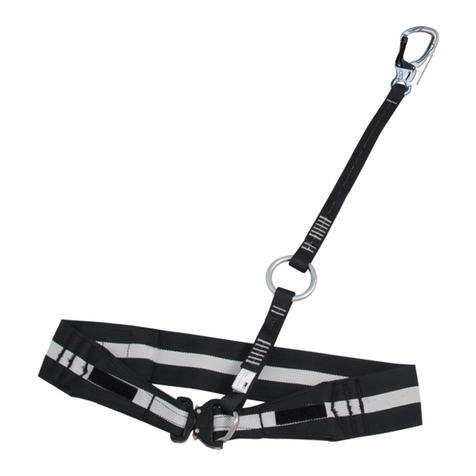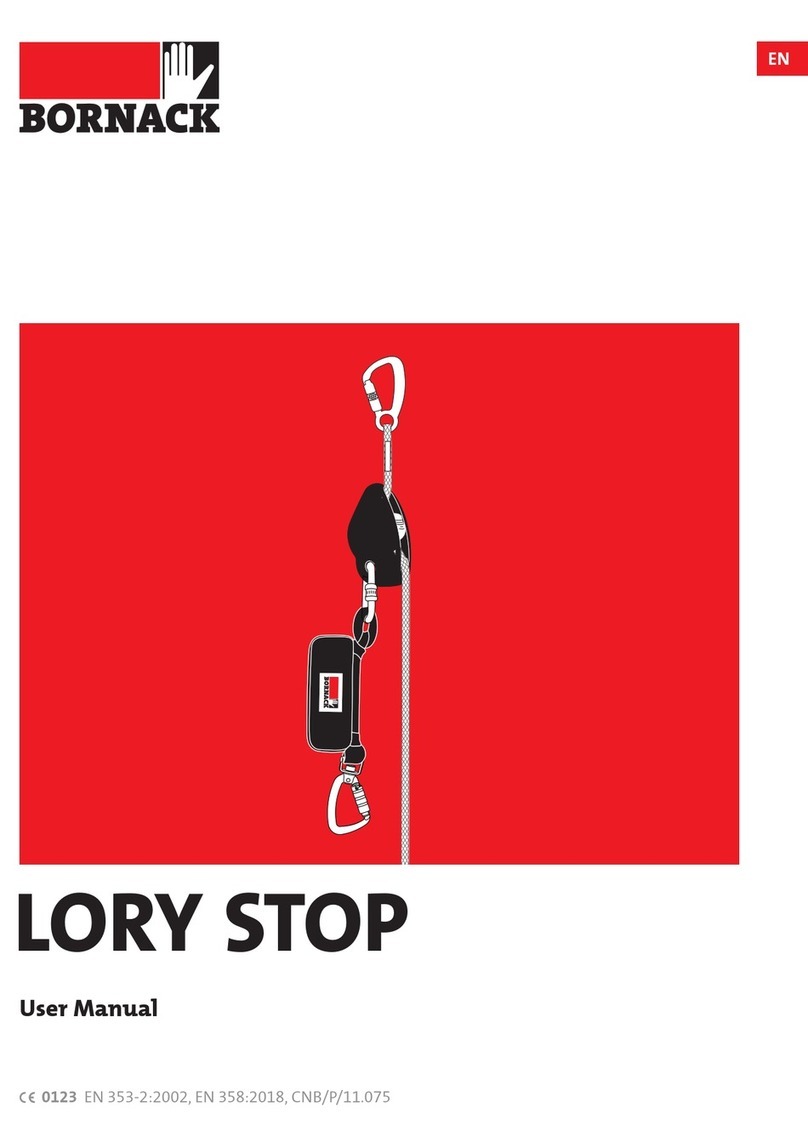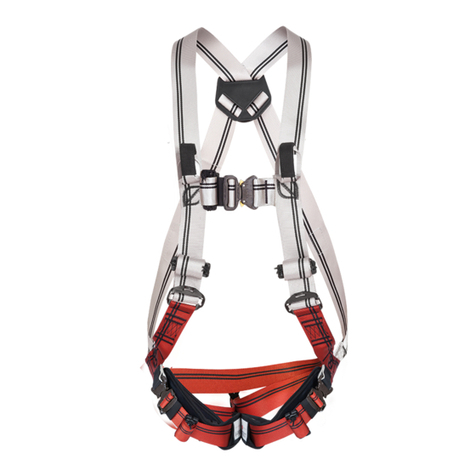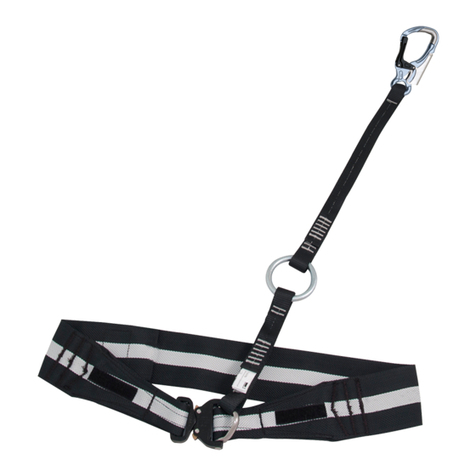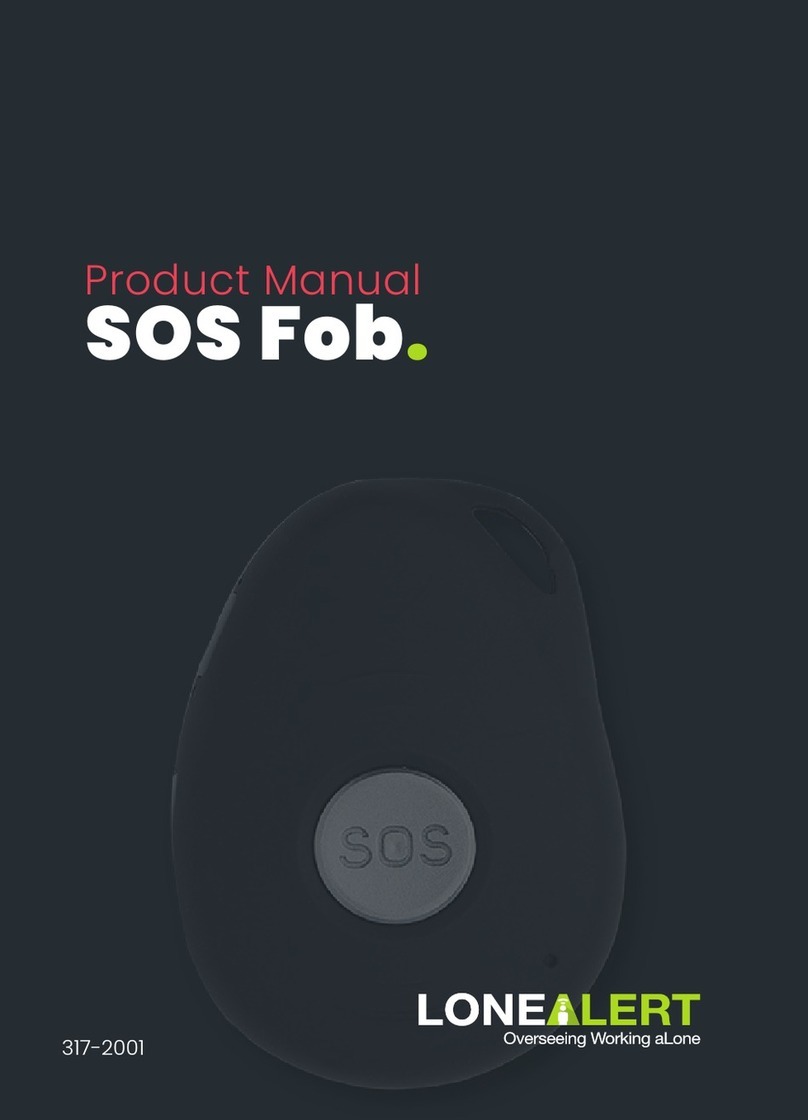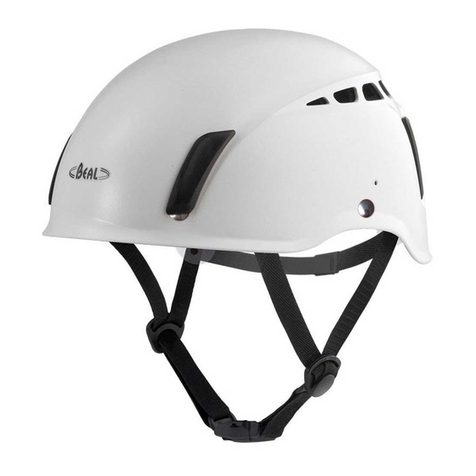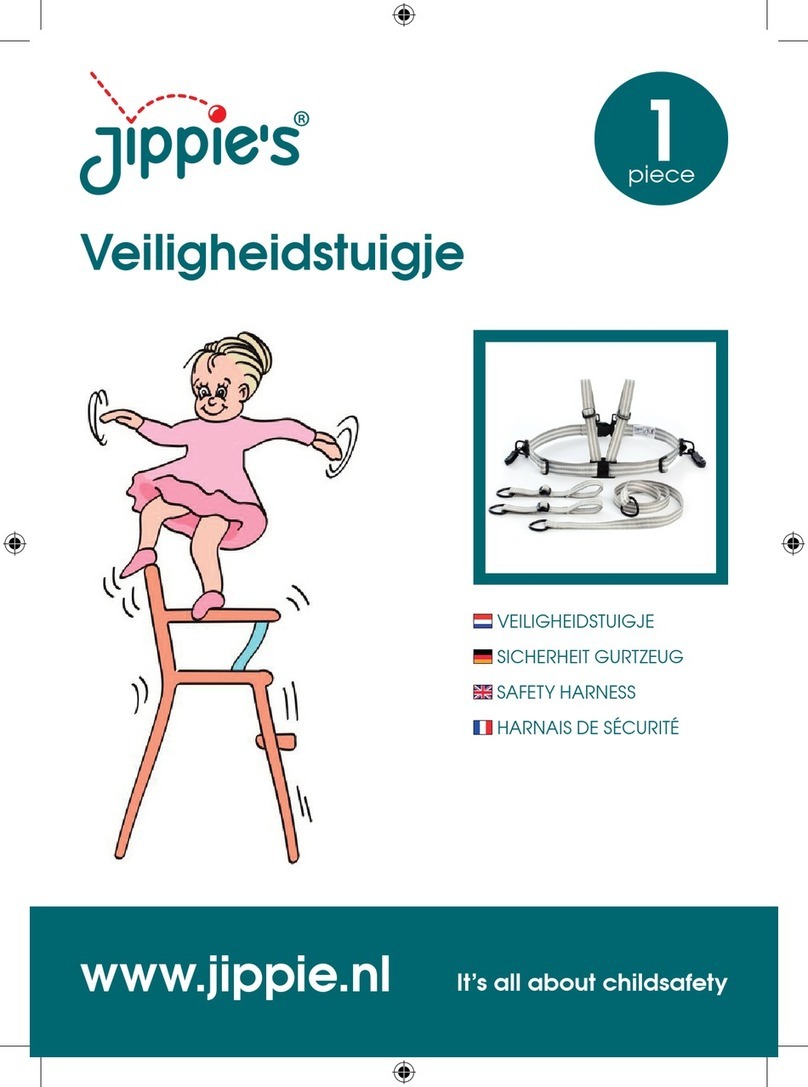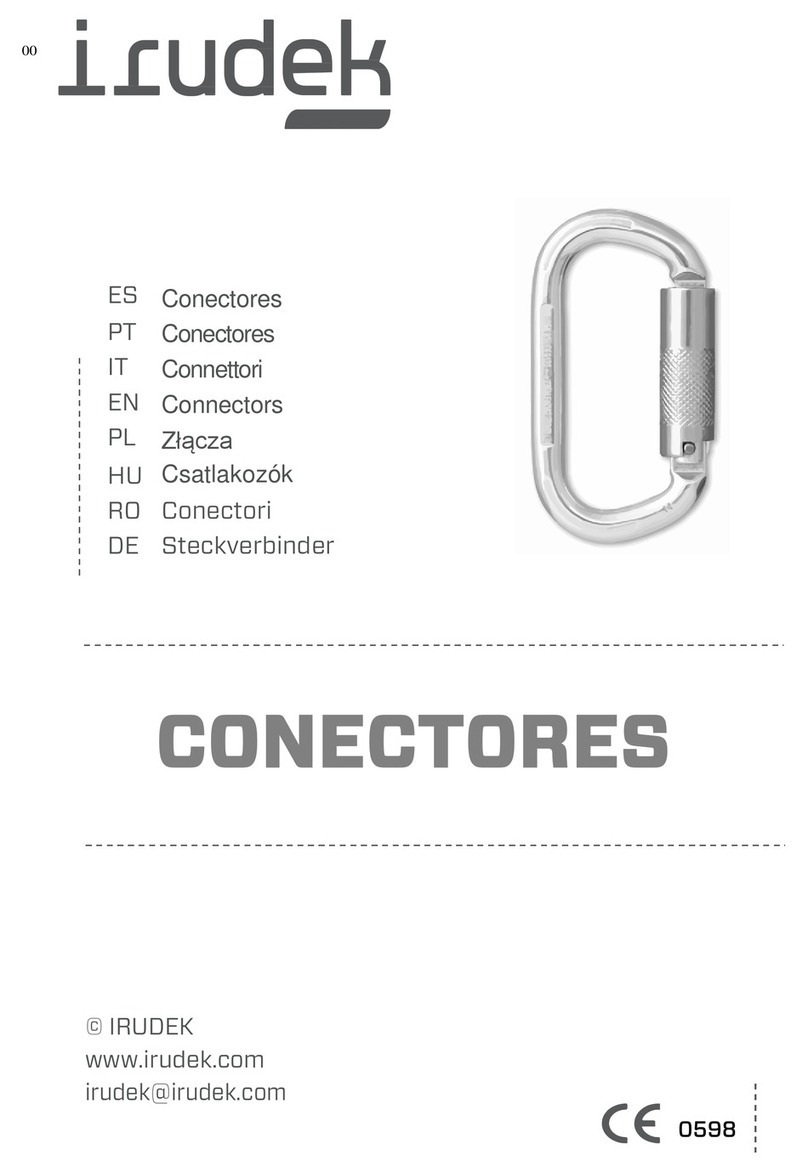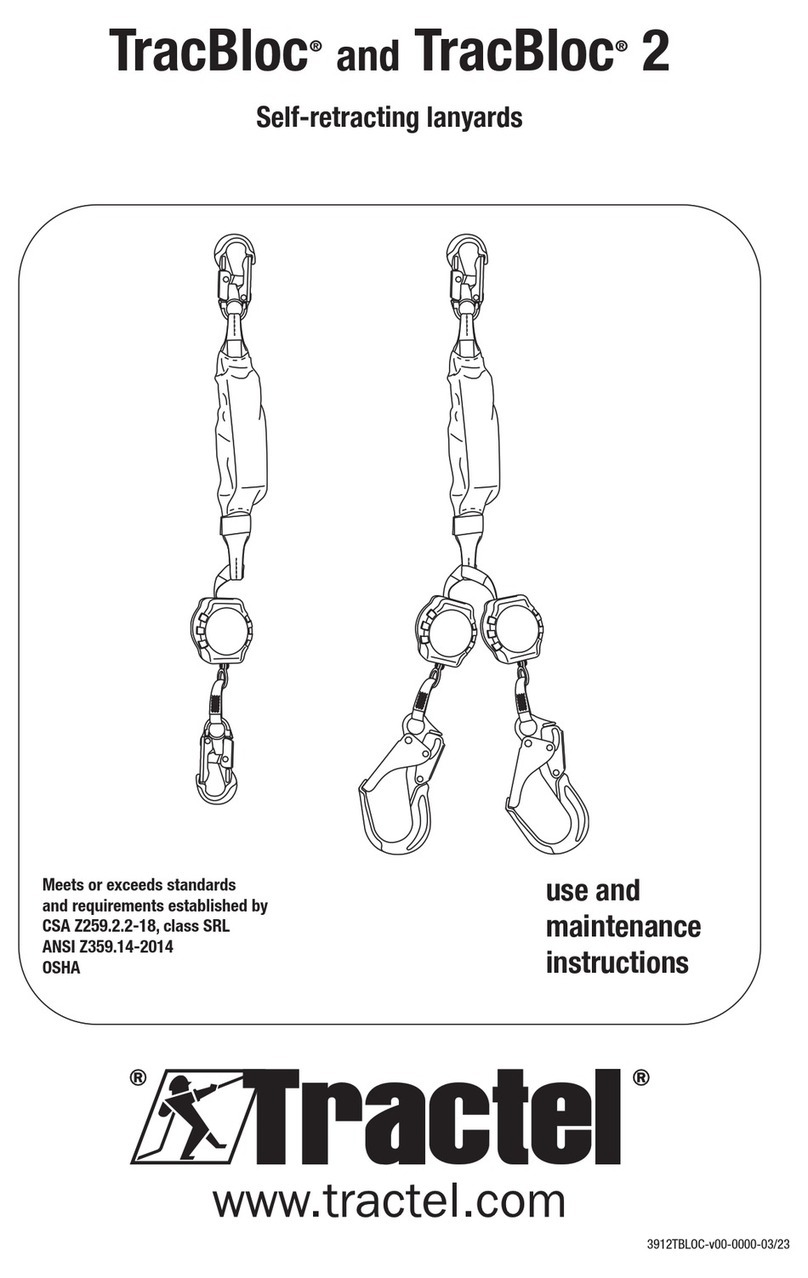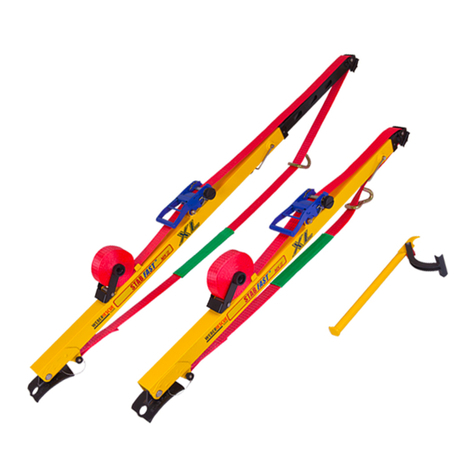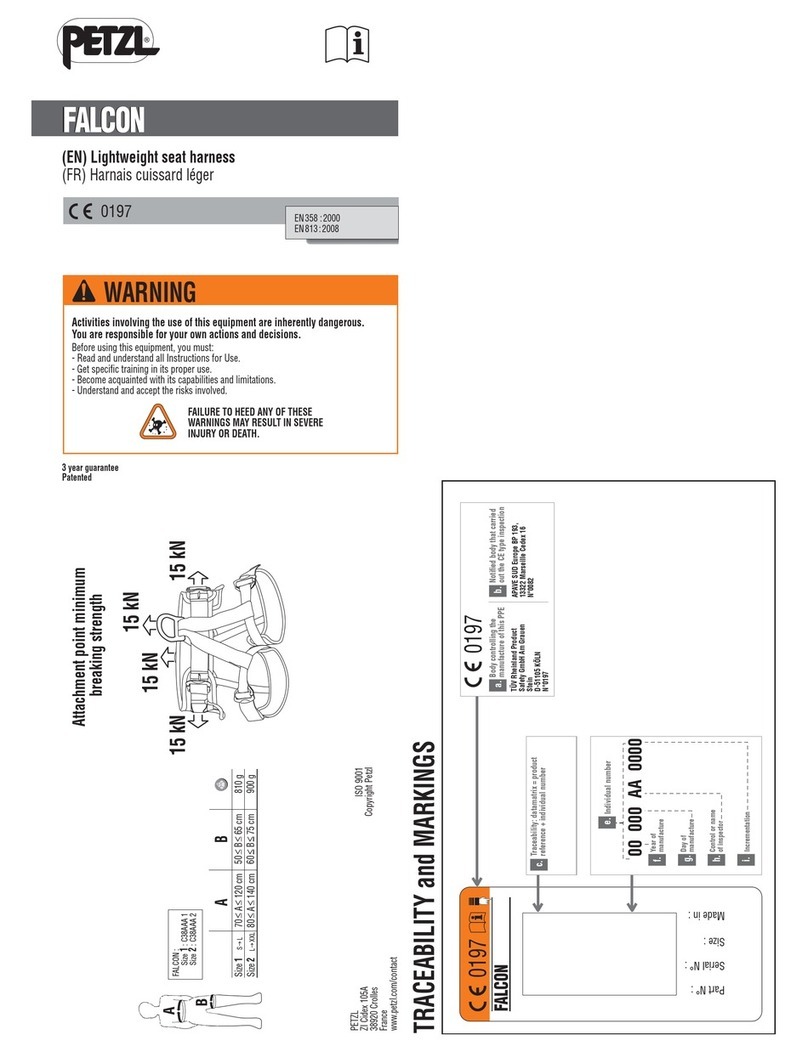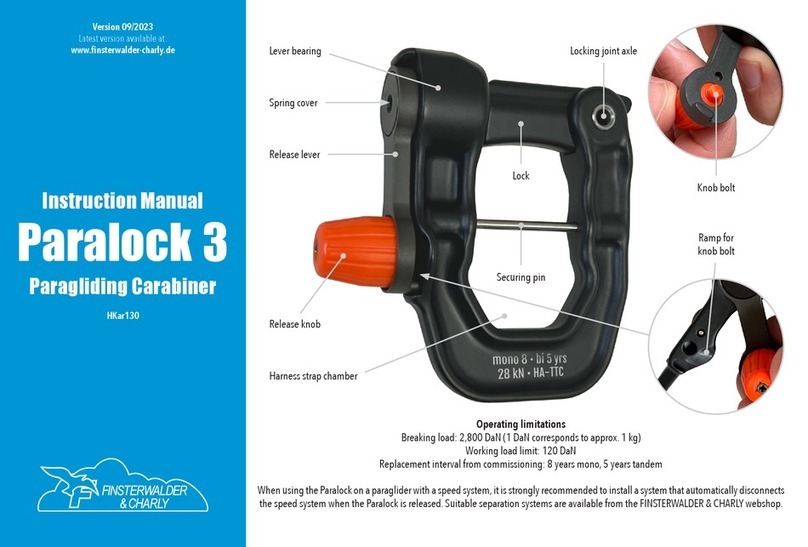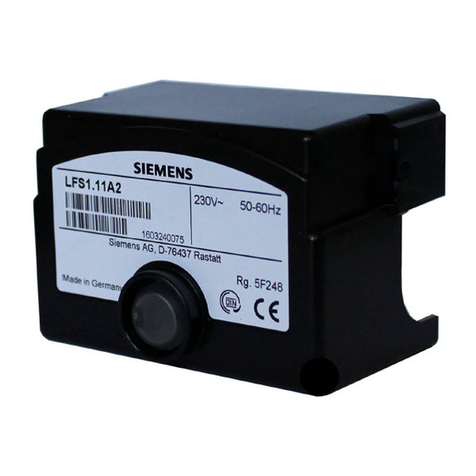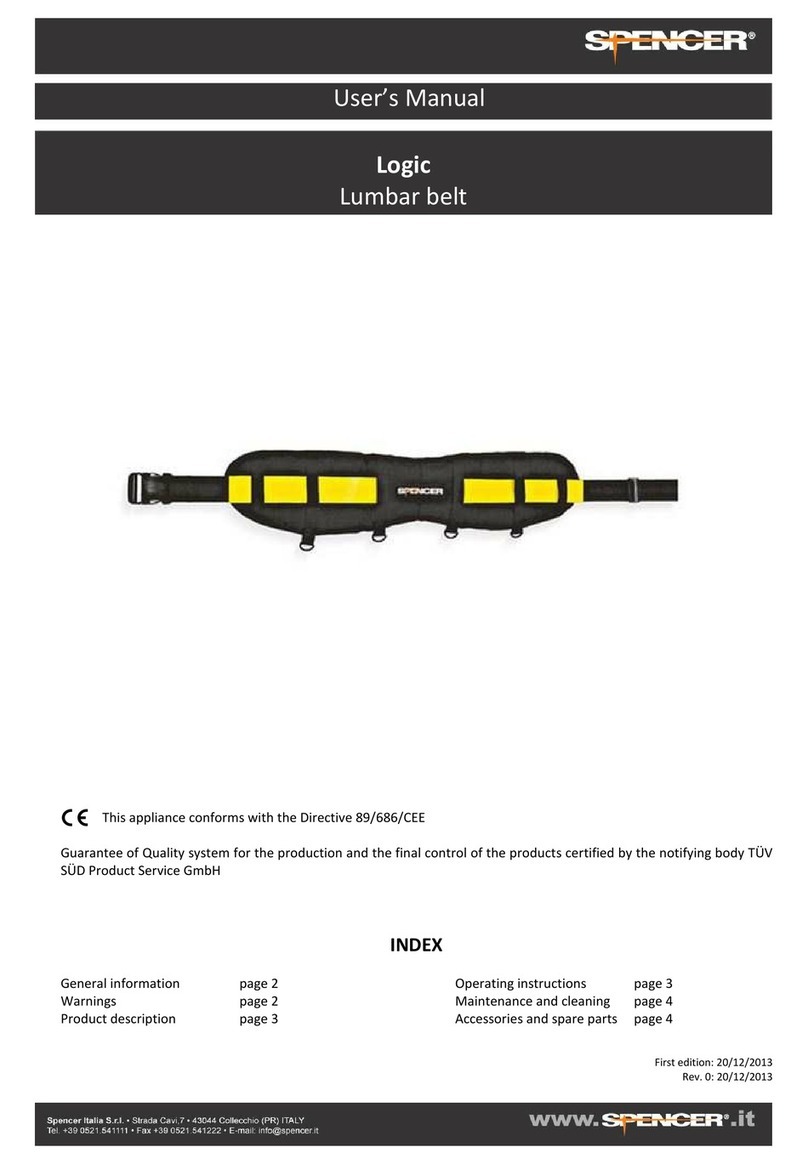
EN
There is a risk to life if these safety in-
structions are not observed!
• The personal protective equipment
(PPE) may no longer be used even in
the case of very minor faults.
• Damaged, fall-stressed or dubious per-
sonal protective equipment or safety
devices must be immediately with-
drawn and not used. The equipment
may only be inspected by an expert in
compliance with DGUV (German Social
Accident Insurance) principle -,
by BORNACK or by a workshop author-
ised in writing by BORNACK. This must
be documented in the test card.
• Independent modifications or repairs
are not allowed.
• Rope protection is part of the personal
fall prevention equipment and should
be assigned to a specific person.
• The personal protective equipment
may only be used by qualified staff
that are familiar with the material.
They must be proficient in handling
the personal protective equipment and
must have been briefed about the pos-
sible risks associated with its use.
• In accordance with the accident pre-
vention guidelines (UVV), the users of
personal protective equipment against
falls (Category III) must attend a theo-
retical training course and a practical
training course. Make use of the train-
ing competence of the BORNACK train-
ing centres: info@bornack.de
• Clothing and shoes must be suitable
for the task at hand and the weather
conditions.
• Only use if fully fit and healthy.
• Health impairments can jeopardise the
safety of the user when working at
heights or depths.
• Calculation of the possible fall path if
all necessary PPE components are used
correctly: (if necessary braking path
HSG) + surplus lanyard (situation-de-
pendent) + braking path energy ab-
sorber (max. . m) + height of D-ring
(. m) + safety reserve . m.
• Before using, ensure adequate clear-
ance below the user to prevent impact
on a protruding object or the ground.
• Protect personal protective equipment
during storing, use and transportation
against the eects of heat (e.g. weld-
ing flames or sparks, burning ciga-
rettes) and chemicals (e.g. acids, alkalis,
oils) and mechanical impact (e.g. sharp
edges).
• The combinability and protective eect
of the PPE must be checked for each
hazard situation (risk assessment).
SAFETY REGULATIONS




















